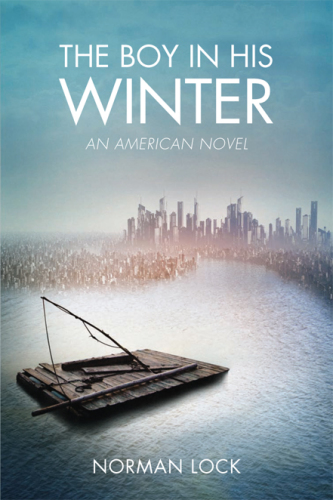
The Boy in His Winter
An American Novel
کتاب های مرتبط
- اطلاعات
- نقد و بررسی
- دیدگاه کاربران
نقد و بررسی

Starred review from February 10, 2014
Inspired by Mark Twain and propelled by the currents of the Mississippi River, this is a tall tale that Lock (Love Among the Particles) has abducted and handed over to Huck Finn. In Lock’s fantastical iteration, Huck and his old friend Jim set off from Hannibal, Mo., in 1835 and raft through the rest of the 19th century. Along the way they meet Tom Sawyer, grown up to become a Confederate soldier, view piles of Union dead, and help a Choctaw chief die with dignity. Jim is inconsolable when he hears John Wilkes Booth has shot Abe Lincoln. By the time they reach Baton Rouge, they’ve entered the 20th century, with horseless travel and the first motion pictures. The time travelers make their way through American history without aging a day, until Jim decides to leave the raft in 1960, sure that it is a good time to reenter the world. (Sadly, he seems to enter the world of To Kill a Mockingbird, fatefully breaking up a chiffarobe for Mayella Ewell.) Huck, still 13, almost makes it to New Orleans before Hurricane Katrina finally blows him from myth into real time. “I can feel my cells divide,” Huck says, reinventing himself as Albert Barthelemy and continuing his journey with a couple of smugglers and a black man who happens to be named James. Albert makes sure things turn out pretty well for himself as a grown man—he’s the author of his own destiny, after all—before he reveals that his beautiful black wife (whose name happens to be Jameson) has written an illustrated children’s book about the adventures of a boy named Albert, calling it A Boy in His Winter. Lock plays profound tricks, with language—his is crystalline and underline-worthy—and with time, the perfect metaphor for which is the mighty Mississippi itself.

March 15, 2014
The latest from distinguished elder statesman Lock, winner of the Aga Khan Prize from the Paris Review, is an eclectic hybrid of literary appropriation, Zelig-like historical narrative, time-travel tale and old-style picaresque. It's narrated in 2077 by an octogenarian Huckleberry Finn, who meandered down the Mississippi alongside his stalwart friend Jim for 125 years, from 1835 until 1960, remaining miraculously unchanged by time. Along the way, they drifted southward through the Civil War (Tom Sawyer has a cameo as a Confederate officer, and Jim is photographed at Vicksburg); the uprooting and massacre of Native Americans (they play a role in allowing Cochise to die with dignity); the electrification of the country (which they encounter when they enter the 20th century around Baton Rouge); and the Jazz Age. Jim, trying to wait until racism has either passed away or grown less virulent, leaves the raft in 1960; after a brief excursion into the world of To Kill a Mockingbird, he discovers there's no outlasting that particular viciousness. Huck, who's followed his old companion, ends up having to stand by helplessly as Jim is lynched. He staggers back to the raft and meanders for nearly another half-century, until Hurricane Katrina spits him ashore in a storm-battered south Louisiana necropolis, a landing that at last jars him back into time. Over the next seven decades, an aging Huck serves as an accomplice to a group of marijuana smugglers; lands in juvie; becomes a flashy, globe-trotting yacht broker; marries an African-American woman who writes novels for children; and makes a late-life return to Hannibal, Mo., where he exacts a kind of revenge on his "creator" by playing the elderly Mark Twain, "river pilot and raconteur," at a riverside amusement park. The philosophical and literary musings are inventive, and Lock manages to make the combination of brevity and tall-tale looseness mostly work. But for all its charms, the book ultimately seems pretty diffuse.
COPYRIGHT(2014) Kirkus Reviews, ALL RIGHTS RESERVED.

























دیدگاه کاربران